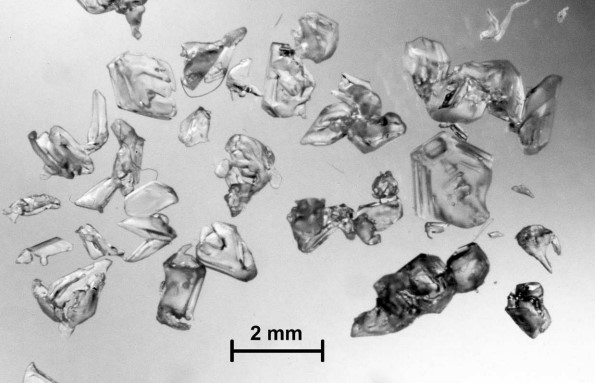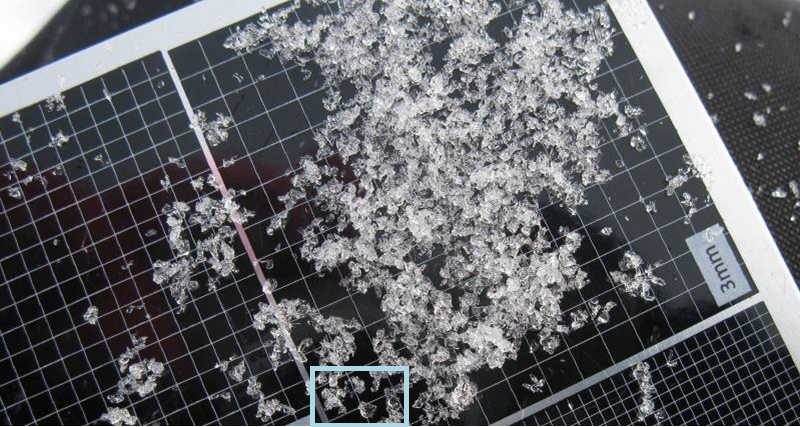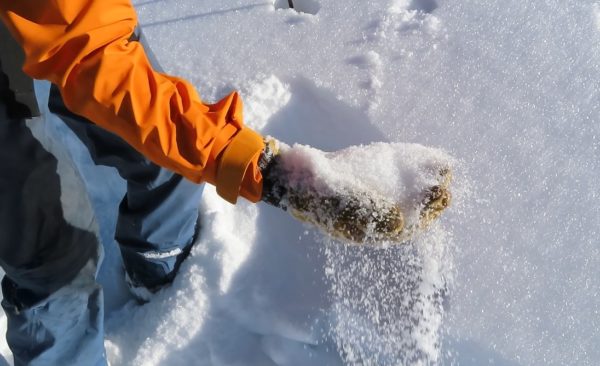Sugary or angular snow grains that form weak bonds with surrounding layers.
Facets are a common type of persistent weak layer. Facets sparkle under sunlight and bounce in a gloved hand, like sugar. Facets form near the snow surface, around crusts, or near the ground when there are strong temperature gradients in the snowpack. When some layers in the snowpack are considerably warmer or colder than others, water vapor preferentially moves from warm snow to cold snow and re-aligns itself to transform existing snow into weak, angular snow crystals. Although there are a variety of environments in which this can happen, strong temperature gradients most often result from clear, cold weather during the winter. This drives faceting between the relatively warm snow near the ground and the colder snow surface, especially when the snowpack is thin. Temperature fluctuations near the snow surface from clear weather, sun, or rain can also create strong temperature gradients in the upper snowpack, thus forming near-surface faceted snow. Faceted snow is the failure layer in many Persistent Slab avalanche accidents.

Faceted grains can range in size from less than .5mm to several mm. Grains have angular corners and square edges. Credit: Crested Butte Avalanche Center

Facets under magnification. Credit: The International Classification for Seasonal Snow on the Ground / AINEVA UniMilano

